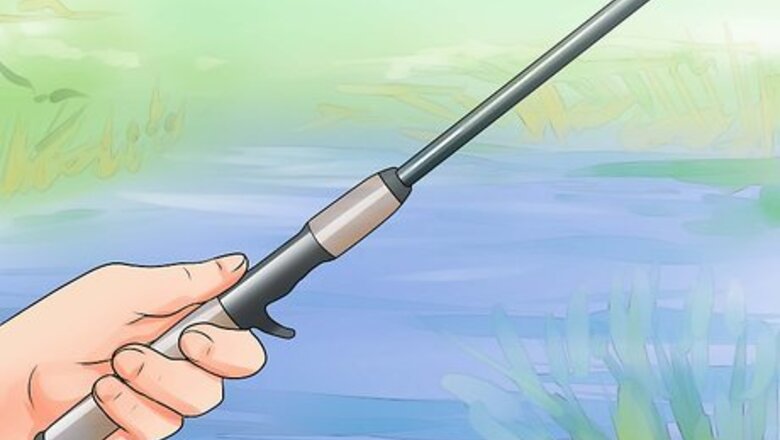
views
X
Research source
Not all jurisdictions allow its use, but if yours does, you'll need to use the right tackle and presentation to make full use of it.
Choosing the Right Tackle
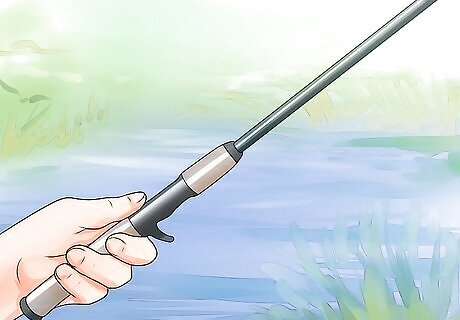
Choose the right rod. Because the umbrella rig is so heavy, you need a medium heavy to heavy action rod to handle its weight. Many anglers prefer rods between 7 and 8 feet (2.1 to 2.4m) in length with graphite blanks. You need the additional length and stout action to heave the weight of the chandelier rig and attached lures, which can be as much as 4 ounces (1/4 pound, 113.4g), in repeated casts. Too short a rod or too spongy an action, and you'll tire yourself out quickly.
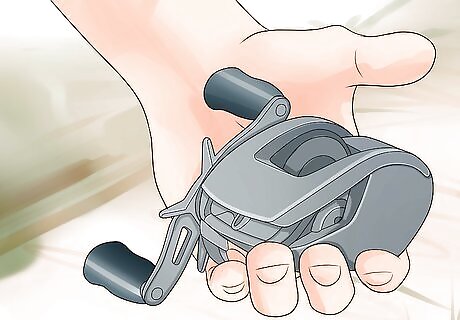
Choose the right reel. Many anglers prefer to use baitcasting reels when fishing the Alabama rig, as those reels are designed to fish with the heavy lines the rig makes necessary. If you prefer a baitcasting reel, get one with a retrieve ratio of at least 5.5 to 1, or better yet, 6.5 to 1, with ball-bearing and designed to be taken apart easily when you need to clean it and a braking system to minimize backlashes. If you prefer a spinning reel, choose one designed to handle heavy line. You almost want a reel designed for saltwater fishing, but not quite.
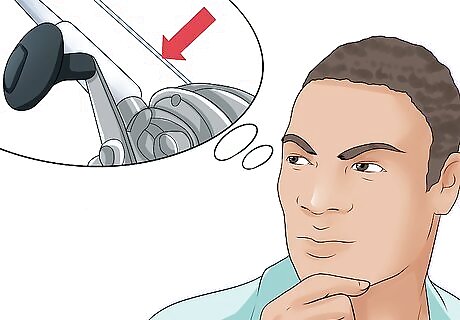
Think heavy line – repeat, HEAVY line. The umbrella rig is not meant for ultralight fishing, by any means, and the line you spool your reel with needs to be heavier than what you'd use when fishing with one lure at a time. For a baitcasting reel, choose a braided line of 65 to 80-pound test (30 to 36kg class). Inventor Andy Poss recommends using 100-pound test (45kg class)! For a spinning reel, use a monofilament line of the same test or class.

Spread out the arms. While you need to keep the arms close together when storing an Alabama rig in your tackle box, when fishing it, the arms should be spread out. Allow enough distance to keep the lures attached to the arms from getting caught on one another but not so far apart as to be easily caught on rocks or stumps. A tight configuration also more naturally simulates the way a group of baitfish swim.
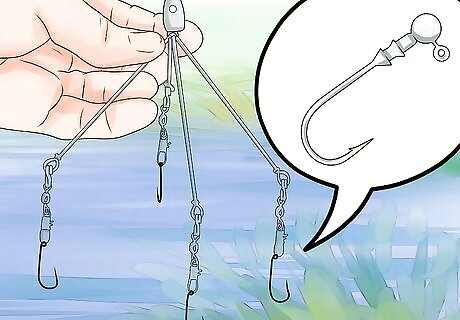
Put a jig head on each arm. If you plan to fish the Alabama rig in relatively open water, you can use round jig heads. If you plan to fish the Alabama jig in weeds or brush, use either jig heads with weed guards or heads designed to be fished self-weedless (inserted into the body of the plastic worm or grub they're baited with). You don't have to use all heads of the same weight. You can put the lightest heads, such as 1/8 ounce (3.55g). at the top, the next heaviest, such as 1/4 ounce (7.09g), at the bottom, and the heaviest, such as 1/2 ounce (14.17g), in the middle. This will give the illusion of a small school of baitfish of different sizes. Often, fish will strike at the jig in the center of the rig. Attach the jigheads to the arms with either the snaps attached to the ends or with split rings. Don't use leaders, as the added length will cause the jigs to foul around one another during the cast or retrieve.
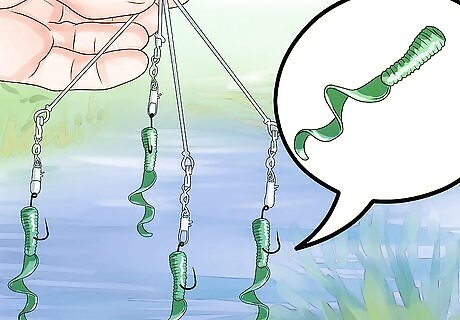
Tip each jig head with a twist-tail grub or worm. Grubs or worms from 4 to 6 inches (10 to 15 cm) in length with a ribbon or sickle tail will flutter when retrieved, creating the illusion of swimming baitfish. The tail should be placed so that it curves downward. Where possible, choose colors that match the food fish where you fish. If that's not possible, you can fall back on the “bright day, bright color; dark day, dark color” rule. If the water is particularly dark, you may want to substitute a spinnerbait for the center jig/grub combination.
Fishing the Umbrella Rig
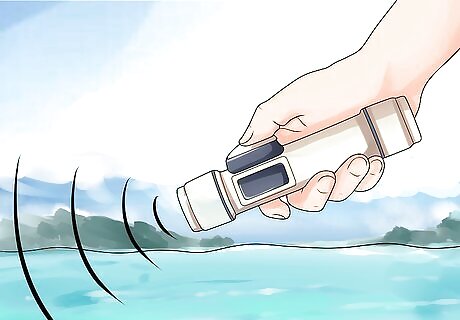
Look for suitable underwater structure. With the help of an electronic depth sounder, you can find underwater ledges and drop-offs, preferably with cover such as stumps, weeds, or gravel. Once you've established the general lay of the submerged land, you can mark your targets with small buoys.
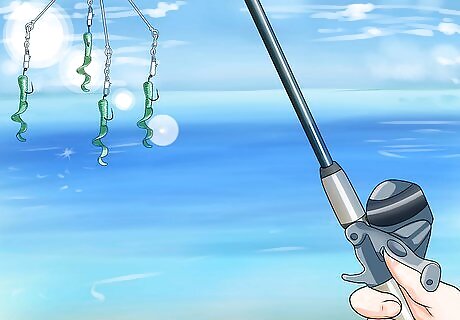
Heave the chandelier. A flick of the wrist just won't do when casting an umbrella rig. You need to put your shoulder, your forearm, and your upper body into the cast to get the rig and its attached lures out there. If you're using a rod with a long handle, you can use your trailing hand (your left hand if you normally cast right-handed or your right hand if you cast left-handed) to whip the handle back as you use your leading hand to whip the rest of the rod forward.

Let the rig settle to the desired depth. Generally, lures will fall 1 foot (30cm) per second. You can count seconds by saying “1001, 1002,” etc. until the lure reaches the right depth.
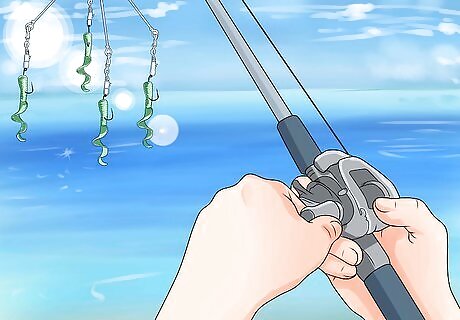
Retrieve the umbrella rig with an interrupted steady retrieve. Reel the rig in slowly for 10 to 15 seconds, then pause for a second before resuming the retrieve. Fish will often strike one or more of the lures when they briefly change direction. You may also get strikes when the rig starts to rise at the moment you're finishing your retrieve. If the speed of your retrieve doesn't work, try increasing or decreasing it.




















Comments
0 comment